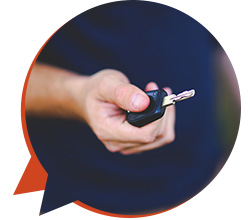Post test parental support

In some countries restrictions are put in place governing how many passengers a young driver can carry and when. Graduated Driving Licensing (GDL) schemes are designed to protect young drivers in the first few months after passing their test, when they are most at risk.
It’s not uncommon to hear the expression ”well now you have passed your test, you’ll really start to learn to drive” and it’s certainly true that the learning process does not stop once you have earned the right to drive alone.
GDL is not mandatory in the UK (although a scheme is to shortly be introduced in Northern Ireland). However, parents can play a vital role in reducing the risks young drivers face by having either a formal or informal parent young driver agreement and agreeing a few basic ground rules.
Parent young driver agreements
Parent young driver agreements are popular in America and are simply an extension of the issues highlighted above. They can be verbal or written and are not about being over-protective or unreasonable but are promises between the parent and the young driver for a few months after passing their test.
For example a parent may promise to:
- Make a car available
- Collect them after a certain time so the young person does not have to drive home late at night.
Young driver may promise to:
- Not drive at night between certain times, e.g. midnight and 6am
- Agree a maximum number of passengers to be carried. This may vary according to the time of the day
- Agree to stick to a zero alcohol limit when driving
- Not to use a mobile phone while driving
- Make a conscious effort to keep to the speed limit
- Wear seatbelts at all times.
RoSPA has a parent young driver agreement which can be used or adapted.
Driving on motorways
Motorways are the safest roads in the country, although when collisions do occur they tend to be severe due to the higher speeds involved. Before driving unsupervised on the motorway it is worth taking a newly qualified driver on to the motorway to give them the opportunity to enter and to experience this environment. Discuss the importance of looking ahead and judging their speed to enable them to merge safely with traffic when joining the motorway. Many ADIs will carry out a post- test motorway coaching session either as a one off or as part of a structured Pass Plus course.
Speed
The faster you drive the longer it takes to stop and the greater the forces involved when a collision does occur. Talk about the responsibility a driver has to keep their passengers safe and discuss what they would do if one of their passengers was encouraging them to drive at a speed which made them feel unsafe, or was faster than they wanted to go.
Remember, collect six points within the first two years of driving and a young driver will have their licence revoked.
Fatigue
Driving at night, especially in the early hours of the morning when the driver may be tired increases the likihood of crashing; the risk is further increased when driving on unlit, rural roads. Consider a voluntary restriction on the times that can be driven and how many passengers can be carried in the first few months of driving. If you are happy for them to drive at night talk about the dangers and the importance of staying alert and strategies they can use to stay awake, such as having a cup of coffee before you leave, opening the window, or finding safe places to stop if they get too tired to continue.
Drink driving
The levels of drink driving has been falling, but still there are about 250 people killed and 8,000 drink drive casualties each year. Talk about how even a small amount of alcohol, even one drink will affect a driver’s ability. Compared to an expert driver, alcohol deteriorates the young driver’s driving performance to a much greater extent. The only safe limit is zero.
Drug driving
In March 2015 the police were issued with new drug drive testing powers. Officers can test for cannabis and cocaine at the roadside, and screen for other drugs, including ecstasy, LSD, ketamine and heroin at the police station. Even drivers that pass the roadside check can be arrested if the police suspect driving is impaired by drugs. In the first six months there were more than 8,000 arrests for drug driving
Drink and drugs will affect driving by:
- Slowing reaction time
- Slowing cognitive function and affects judgement
- Increases risk-taking behaviour.
For example, a driver affected by cannabis may drive too slowly and find it difficult to drive within designated lanes or stay awake. Amphetamines and ecstasy can lead to speeding or erratic driving as well as reduced vision and increased risk taking behind the wheel. (Stough, C. & King, R. (2010). Drugs and driving Prevention Research Quarterly, 12, 1–32)
Mobile phones
Drivers who use a mobile phone, whether hand-held or hands-free are four times more likely to crash, injuring or killing themselves and other people, as it is a major distraction when driving. Drivers are aware that using a hand-held phone is against the law, yet a sizeable minority of drivers of all ages persist in carrying this out. Any young driver with less than two years driving experience caught using a hand-held phone will have their licence revoked. The RAC Foundation produced this short film to demonstrate the potential consequences and how using a mobile phone while driving can have life-changing implications.
